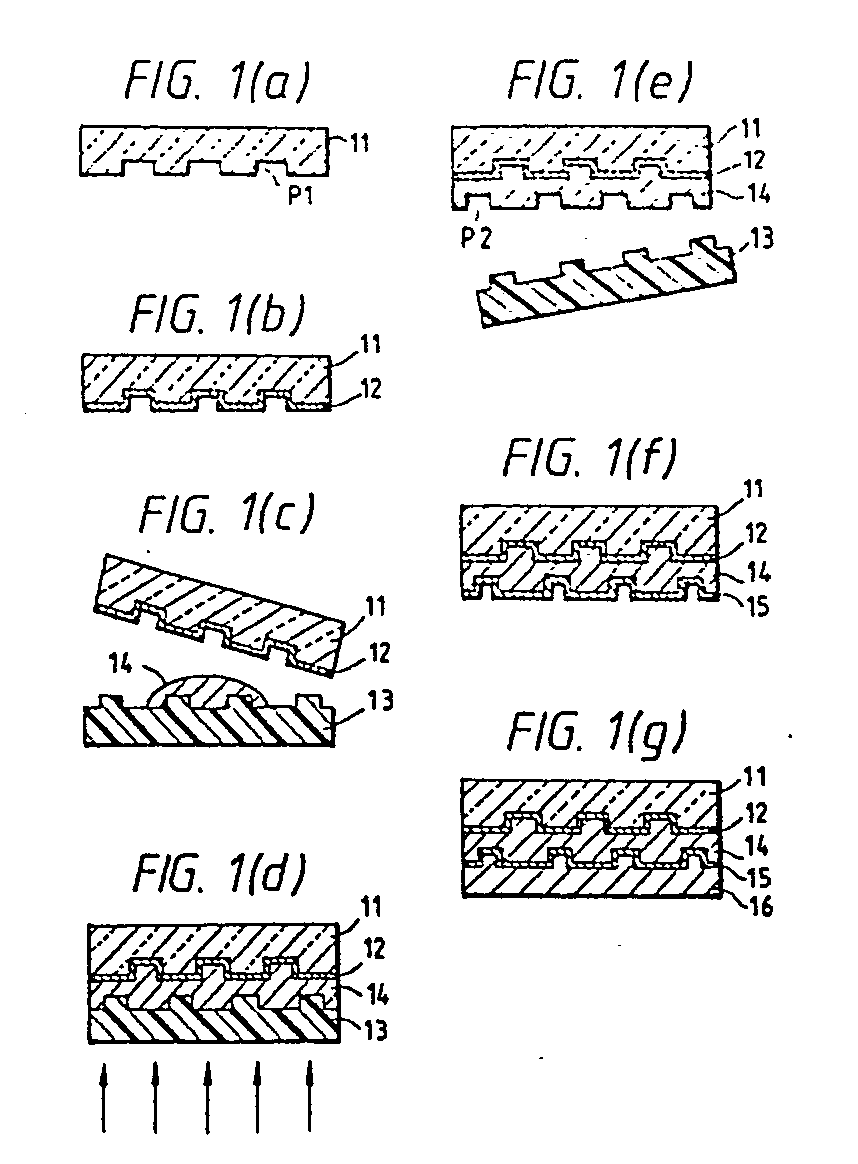(57) An optical information record carrier, in the form of an optical disk, has multiple
reflective surfaces (12,15), each carrying separate information and each readable
by an optical beam directed from the same side of the record carrier. The topmost
reflective surface (12) reflects light of a first waveband and passes light of a second
waveband. The next topmost reflective layer (15) reflects light within at least part
of the second waveband. The record carrier may be formed by producing a first reflective
layer (12) having a first pit pattern in the surface of a transparent substrate (11),
pressing the first substrate/layer combination to a transparent stamper (13) having
a second pit pattern, with a radiation hardening liquid resin (14) therebetween, irradiating
the resin by applying radiation to the resin through the stamper, peeling off the
stamper, applying a second reflective layer (15) to the hardened resin surface opposite
the surface in contact with the first reflective layer, and applying a protective
layer (16) to the second reflective layer.
|

|
